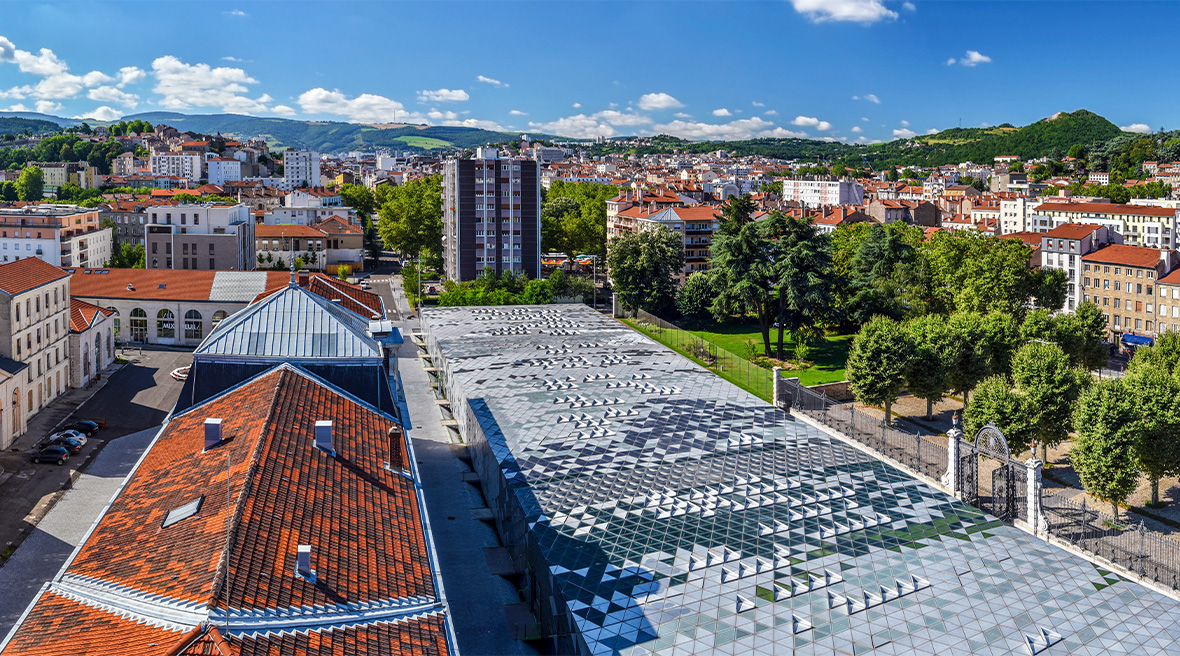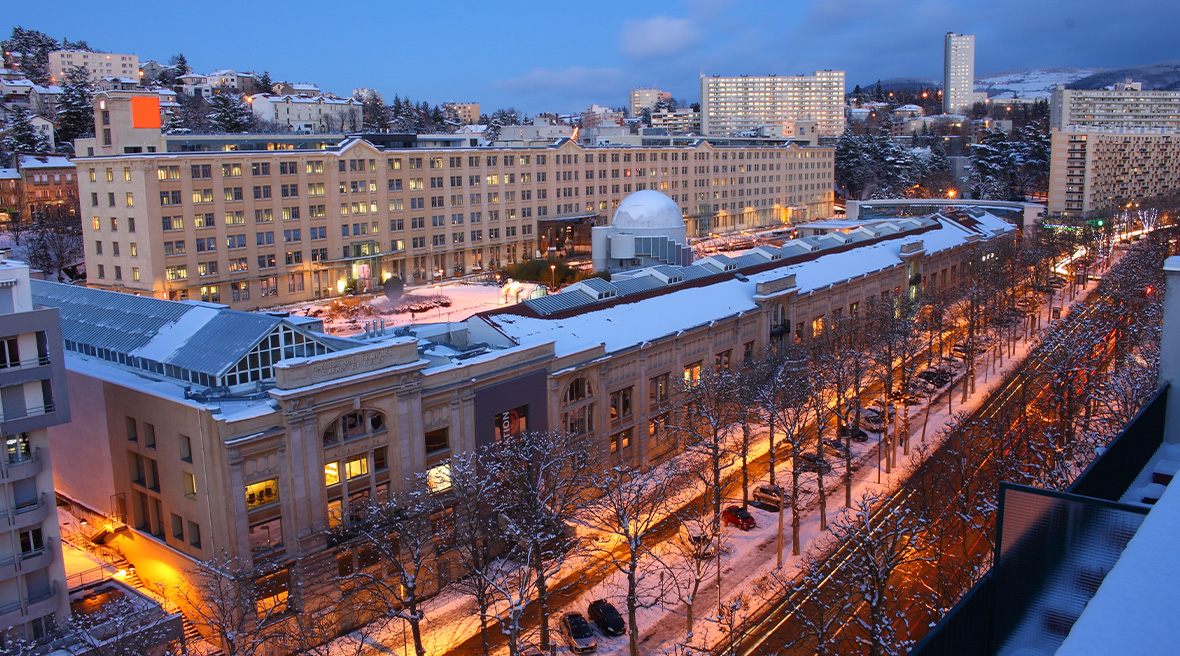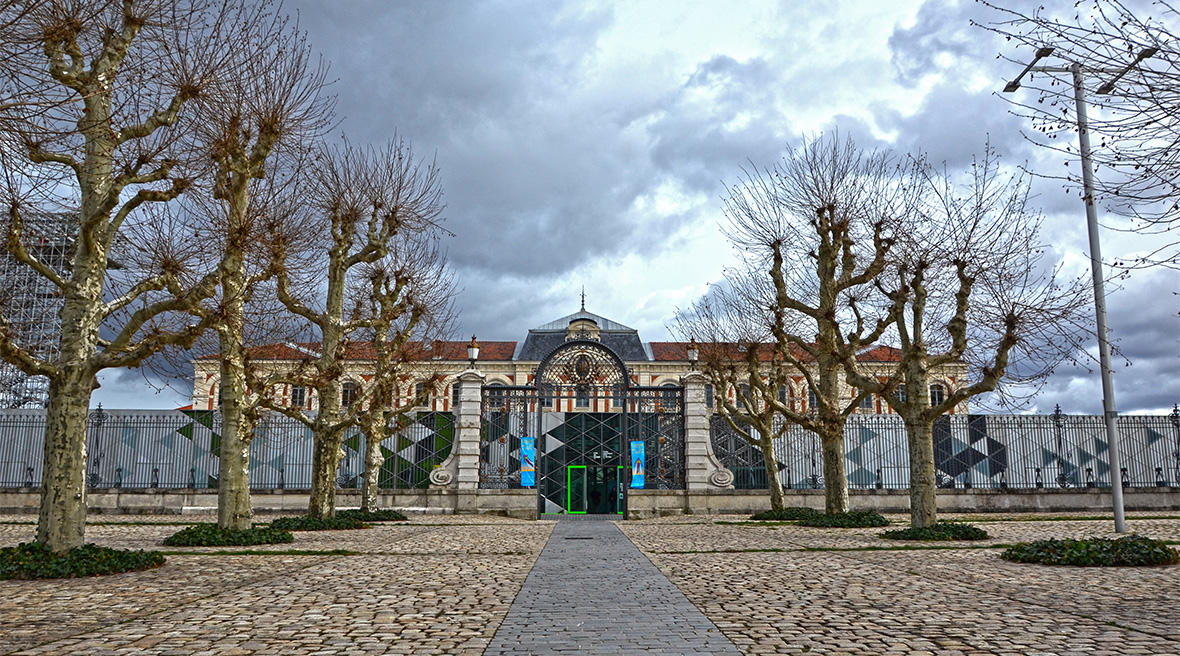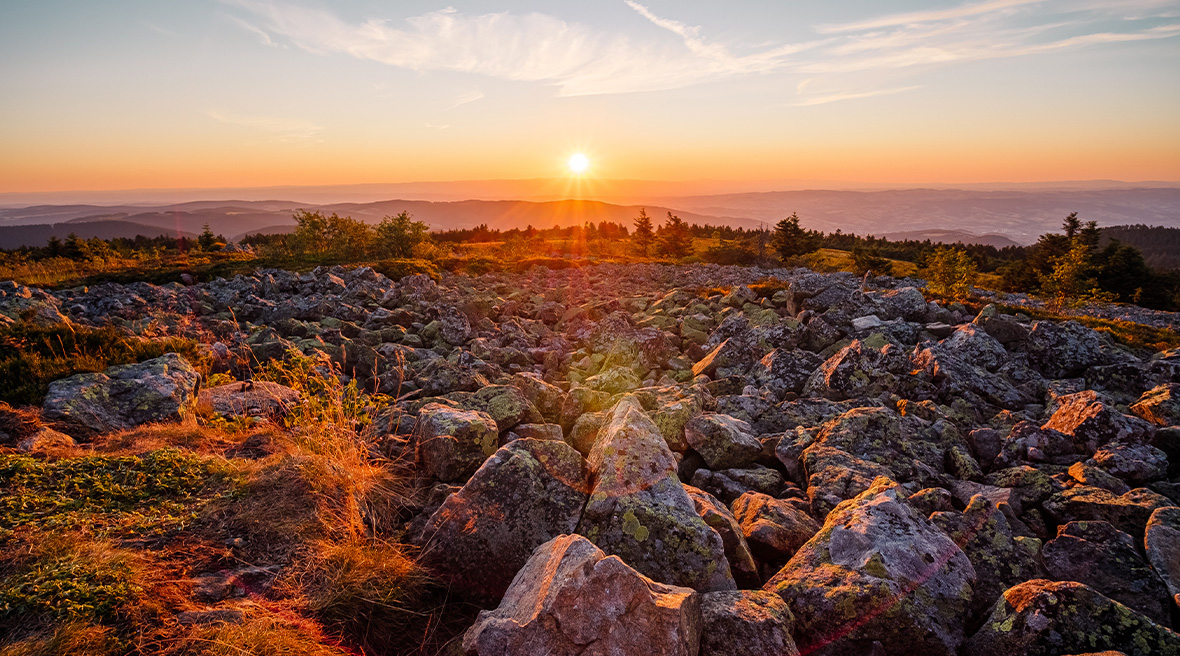Things to see and do in Saint-Étienne
Nestled in the mountainous Massif Central and known for its industrial heritage (which has been turned into several fascinating museums), Saint-Étienne has blossomed into a UNESCO Creative City. Whether it is design, art, history or culture you are looking for in a city, Saint-Étienne delivers it – along with plenty for football and sports lovers.
Where is Saint-Étienne?
Saint-Étienne is located in the Auvergne-Rhône-Alpes region of east central France, just over an hour’s drive south of Lyon.
Driving to Saint-Étienne from Calais
You can drive to Saint-Étienne from our Eurotunnel Le Shuttle terminal in around 8 ½ hours, via the A16 and A6 motorways (with tolls).

Saint-Étienne as seen from the tower of the Cité du Design
A brief history of Saint-Étienne
The city grew up around a church dedicated to Saint Stephen and a Cistercian abbey. During the 16th century it became known as a town that produced both weaponry and ribbons.
Saint-Étienne rose to prominence in the 19th century as a major centre for coal mining. Its population exploded after 1850, and heavy industry played an important role in the city’s growth. Saint-Étienne became a centre for bicycle manufacturing. It is now a world leader in design and is part of the UNESCO Creative Cities network.
Must-visit places in Saint-Étienne
Musée d’Art et d’Industrie
This is a museum that reflects the city’s three main areas of manufacturing – armaments, bicycles and ribbon-making. The permanent exhibitions tell the story of Saint-Étienne through these vastly contrasting products, exploring the technical aspects of their production, with collections that feature original antique bicycles, firearms and silks. The Musée d’Art et d’Industrie is open 10am-6pm every day except Mondays and is located on Place Louis Comte in the city centre.
The state-of-the-art Planétarium

The Planetarium of Saint-Étienne in the grounds of a former industrial site
Built as part of the regeneration of a former industrial site, the Planétarium de Saint-Étienne is a fun thing to do for the whole family. There is a projection room where you can watch 3D presentations on the sky and deep space, and a simulator to understand more about far distant galaxies, planets and constellations. The planetarium, unmistakeable because of its distinctive dome, is on Rue Pierre and Dominique Ponchardier and is open seven days a week during the summer, but closes for an hour from 12.30-1.30pm Monday-Friday.
Musée de la Mine
For anyone interested in what life was like for a coal miner in Saint-Étienne, the Mining Museum is a must-visit experience. The museum is housed at an old mine shaft close to the city centre, and visitors can take the same daily journey made by generations of miners, stepping into the cage and taking the lift deep below ground, and then the train to the coal face itself.
You can also tour the restored washrooms, lamproom and power room, and the exhibition rooms in which the history of the mines of Saint-Étienne unfold before your eyes.
Cité du Design

The entrance to Cité du Design
La Cité du Design is at the heart of Saint-Étienne’s status as a UNESCO City of Design. Located on the site of a disused armaments factory, the Cité incorporates the school of art and design, an architectural school and a broadcasting centre. It hosts an International Design Biennial featuring exhibitions, conferences and publications highlighting design culture from around the world.
Stade Geoffroy Guichard
 Credit: Stade Geoffroy Guichard, by @ville de St Etienne, CC BY-SA 4.0, via Wikimedia Commons
Credit: Stade Geoffroy Guichard, by @ville de St Etienne, CC BY-SA 4.0, via Wikimedia Commons
Stade Geoffroy Guichard, the home of AS Saint-Étienne
As with many cities, Saint-Étienne is known worldwide for its football team. AS Saint-Étienne is one of France’s most famous clubs, having won the Ligue 1 title ten times in its history. Saint-Étienne’s last league title was in the early 1980s when the club was captained by one of the all-time great French players, Michel Platini. The team are known as Les Verts (‘the Greens’) and they play at the Stade Geoffroy Guichard, one of the venues for the 2023 Rugby World Cup.
The stadium houses a museum about the history of AS Saint-Étienne, and runs regular stadium tours.
Place Jean-Jaurès
Place Jean-Jaurès is the city’s main square and is dominated by the neo-Gothic cathedral, completed in the early 20th century. The square is leafy and lined with bars, restaurants and cafés. Here is the place to sit outside and while away a few hours over a leisurely lunch and watch the world go by. Sports fans make a beeline here to soak up the atmosphere before a big game at the Stade Geoffroy Guichard.
Grand’Église
The oldest church in Saint-Étienne, the Grand’Église was built between 1450 and 1480 in the Gothic style. It suffered in the Wars of Religion and the French Revolution, but some fine works of art remain, such as the ‘Veu de Ville’ painting, and Guillaume Fontaine’s 16th-century wood sculpture of the ‘Mise au tombeau’.
Crêt de la Perdrix

Sunrise from the summit of Crêt de la Perdrix
Saint-Étienne is in the Massif Central, and the peaks are not too far away from the city. One easy walk you can do is the Crêt de la Perdrix, or Crest of the Partridge, a hike along the ridge of the Mont Pilat. It takes around 35-40 minutes to drive to the start of the short summit walk from Saint-Étienne, but you can do a longer trek (around 7km) from the car park near the Col de l’Olleillon. It is not a challenging walk and there is an observation deck at the summit, offering amazing views of the Alps and Rhone Valley.
Why not do some more exploring in the Massif Central, including visiting the Puy de Dôme, a long dormant volcano in the Chaîne des Puys region?
Visit Saint-Étienne with Eurotunnel Le Shuttle
Saint-Étienne is a sporty city, but there are plenty of other things to do while you are there. It all starts with a 35 minute crossing from Folkestone via Eurotunnel Le Shuttle.